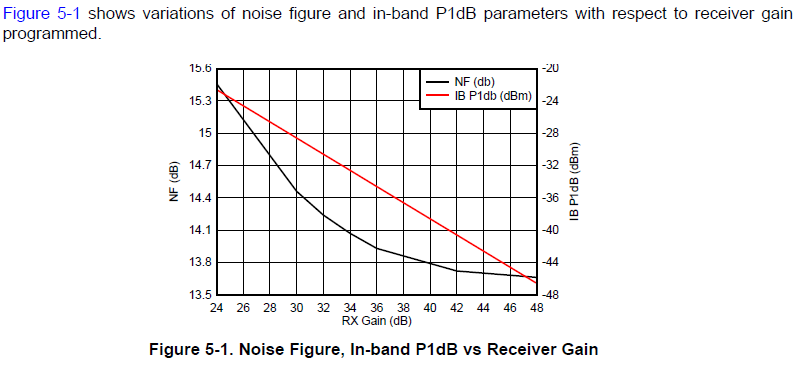Dear,
I have some question about the RF performance:
1. How to calculate the radar sensitivity. The simplify receiver sensitivity formula is Sv=NoiseFloor+10lgBandwidth+NF+DemodulationThreshold
What number should NoiseFloor, Bandwidth and DemodulationThreshold use in your FWCW radar?
2. Receiver P-1dB spec. 1-dB compression point spec is -5dBm in table, however the in-band P-1dB is less than -20dBm in below figure.
What is the different?



